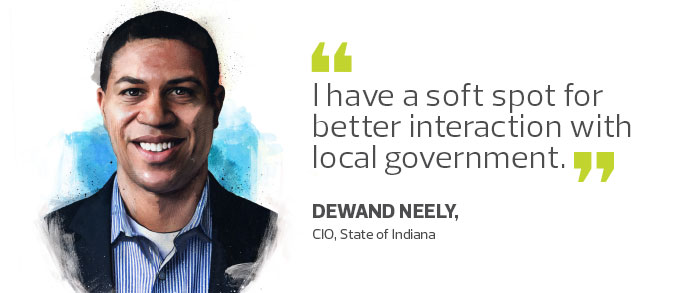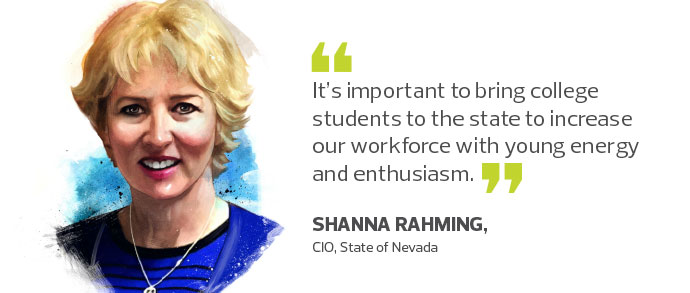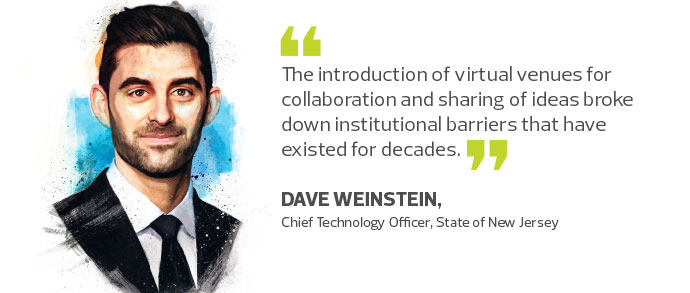Q&A Roundtable: How the Newest State CIOs Are Renewing the Workforce
A new crop of state CIOs have taken over state IT leadership roles in recent years. Last year, 15 new state CIOs were installed. This new generation of state technology leaders brings fresh, new perspectives and deploys new technology and strategies that will shape state government IT for years to come.
StateTech magazine spoke to five recently appointed state CIOs and CTOs, discussing their priorities and new initiatives, from revamped service delivery models to cross-jurisdictional collaboration.
They also discuss workforce challenges, cultural changes and plans to better meet the expectations of an increasingly tech-savvy citizenry and workforce.
We spoke with Indiana’s Dewand Neely, named CIO in October 2015; Nevada’s Shanna Rahming, who was named the permanent state CIO in October 2015 after serving on an interim basis for six months; Arizona’s Morgan Reed, appointed state CIO in October 2015; California’s Amy Tong, named the permanent state CIO in June 2016 after serving as interim CIO for three months; and New Jersey’s Dave Weinstein, appointed CTO in June 2016.
STATETECH: Workplace culture is important. Organizationally or culturally, what changes have you made?
WEINSTEIN: We’ve done a lot to flatten the culture. The organization was composed of siloed units that didn’t get exposed to each other much.
We’ve made great strides as it relates to transforming the workplace environment and enhancing work-life balance. For example, we’ve instituted policies to allow for more flexible work arrangements such as an 80/20 arrangement similar to what Google does, allowing people to work 20 percent of their time on projects that are outside of their day-to-day job description. That has yielded enormous synergies to unlock some hidden potential within our staff.
 Structurally, we’ve created more mid-level management positions. This will allow for more upward mobility and free up resource bandwidth among senior managers to tackle more strategic challenges.
Structurally, we’ve created more mid-level management positions. This will allow for more upward mobility and free up resource bandwidth among senior managers to tackle more strategic challenges.
More important, I set the tone from the outset that my door, and the doors of my senior leadership team, are always open. We also want to give our employees the tools to enable collaboration. The introduction of virtual venues for collaboration and sharing of ideas broke down institutional barriers that have existed for decades.
REED: Organizationally, our group acted in silos and we’ve broken those down. We have more cross-team meetings and more cross-team collaboration. We regularly have one-on-ones with employees, and I meet with every member of my management team quarterly.
TONG: As I mentioned before, one of my key goals is to make sure all of CDT is marching in the same direction. We have done some structural realignment to help with that goal. I am also trying to make sure we have good internal communication by having regular all-staff meetings. I’ve also made myself available to staff who want to talk to me.
RAHMING: We’ve worked diligently to be more collaborative with our customers. I’m restructuring to have an agency group and an enterprise group. It has to be approved by the legislature, but we are working toward it. The agency group will focus on agency needs. It will be like having their own IT department.
NEELY: We are right in the middle of getting our first open-concept environment for state government. In an effort to encourage better communication and teamwork, I’m creating an open atmosphere on my floor. It’s a drastic change to what you see in normal state government with cubicles and older-style segmented offices.
Fiscally, the benefit is that we have more people in a smaller space, so we save on real estate, but it’s really about everyone being more open and approachable. It’s also having a workspace with more daylight and a more modern feeling that may attract the next-generation workforce.
STATETECH: How important is it to attract that next-generation workforce?
RAHMING: It’s important. In fact, I’ve proposed a student internship program. It’s important to bring college students to the state to increase our workforce with young energy and enthusiasm. This will help our pipeline for potential employees when they graduate, but also bring fresh ideas and new knowledge into our state IT shops.

About 40 percent of my workforce of 180 IT people could retire in three years. We are doing succession planning and setting folks up to take their place through job training. As we hire people, we are looking five years down the road and thinking, if we keep that person that long, can we move that person up to manager or lead technician?
STATETECH: What are you doing to better serve digital natives’ needs?
NEELY: We are revamping our customer-facing portal, and trying to give that common, one-stop shop look and feel.
REED: We are looking at mobile apps. Not only do our citizens want to interact that way, but our employees want to use mobility as well. And the reality is that, from a talent acquisition and retention standpoint, we need to have modern solutions. If we hire someone fresh out of college and say, “Here’s your job. Push all this paper,” they are not going to work for the state.
STATETECH: Are there any projects that you want to pursue that we haven’t discussed? Any emerging technologies you are considering?
TONG: I have created a Civic Advisory Council that brings together leaders from the private sector to help advise our department on new areas of interest that may be beneficial for the state to explore.
NEELY: I have a soft spot for better interaction with local government. I’ve talked to our state and local officials about the amount of data local governments give to the state for reporting or auditing purposes. It’s not a two-way street, so I’m looking for opportunities to make the interaction more beneficial for them. For example, we could republish the data, so they can run reports without having to stand up their own systems.
 WEINSTEIN: Instead of having separate infrastructure for storage and computing, we just converge it into a more agile, hybrid infrastructure that enables self-service. Industry calls this Infrastructure as a Service and Platform as a Service.
WEINSTEIN: Instead of having separate infrastructure for storage and computing, we just converge it into a more agile, hybrid infrastructure that enables self-service. Industry calls this Infrastructure as a Service and Platform as a Service.
RAHMING: Working closely with counties and cities to increase adoption of Internet of Things.
REED: Internet of Things. We don’t have a direct need for it, but our agencies do, whether it’s smart sensors or drones. Another is analytics. We are working to access data from multiple agencies and systems, so we can start making data-driven decisions.
Don’t forget to check out the first part of our interview, where we explore how the CIOs are enhancing cybersecurity and focusing on innovation.









